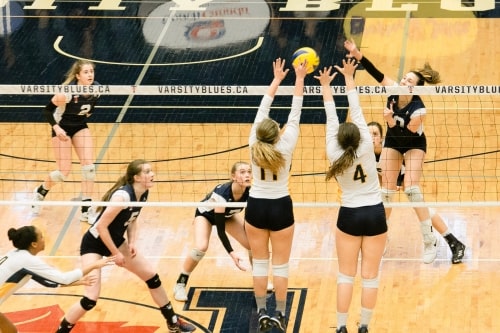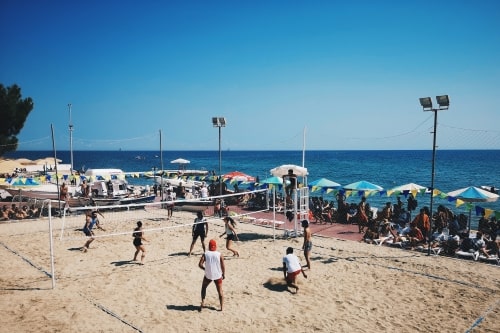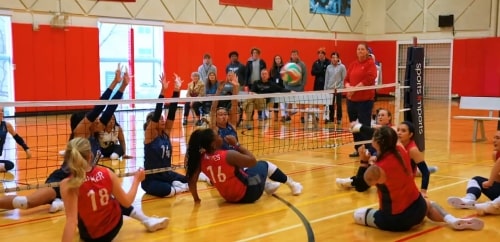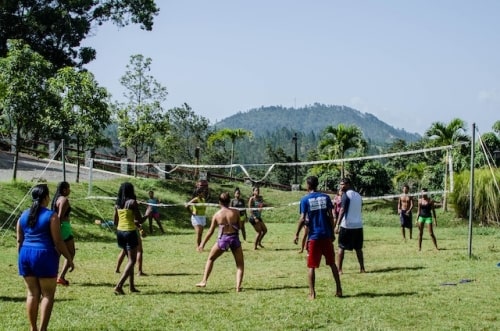Types of Volleyball

Volleyball is a popular sport that can be played in various settings, each with its own unique characteristics. From the fast-paced indoor matches to the thrilling beach games, there are different types of volleyball that cater to diverse preferences and playing environments. In this article, we will explore the various types of volleyball, their rules, court dimensions, strategies, and more.
Indoor Volleyball
Indoor volleyball is the most common form of the sport, played on a hard court with high ceilings. It requires teams to follow specific rules and strategies to succeed.
Rules and Regulations for Indoor Volleyball
In indoor volleyball, players must abide by rules such as rotating positions, allowing three contacts before returning the ball over the net, and preventing double hits. The game is typically played in sets, with each set played to 25 points.
Indoor Court Dimensions
The indoor volleyball court measures 18 meters long and 9 meters wide. It is divided into two equal halves by a net, which stands at a height of 2.43 meters for men’s matches and 2.24 meters for women’s matches.
Positions and Roles
Indoor volleyball teams consist of different positions, including setters, hitters, blockers, and liberos. Each player has a specific role, contributing to the team’s overall performance and strategy.
Beach Volleyball
Beach volleyball is a popular variation played on sand, often associated with a more relaxed and recreational atmosphere. It requires adaptability, teamwork, and specialized techniques.

Rules and Regulations for Outdoor Volleyball
Beach volleyball follows slightly different rules compared to indoor volleyball. For instance, teams consist of two players instead of six, and the game is played in sets of three. Moreover, players do not rotate positions during the game.
Beach Court Dimensions
The beach volleyball court is smaller than the indoor court, measuring 16 meters long and 8 meters wide. The net height remains the same as in indoor volleyball.
Strategies and Techniques
Due to the sandy surface, beach volleyball demands specific strategies and techniques. Players need to account for factors such as wind, uneven footing, and the ability to jump and move quickly in the sand.
Sitting Volleyball
Sitting volleyball is designed to accommodate athletes with disabilities, particularly impairments in their lower limbs. It offers an inclusive and competitive environment for individuals with mobility challenges.

Rules and Regulations for Sitting Volleyball
Sitting volleyball follows modified rules to cater to the needs of players who are unable to stand or have limited mobility. The main difference is that players must remain seated at all times during the game, with their buttocks touching the ground.
Sitting Court Dimensions
The sitting volleyball court is smaller than the standard indoor court, measuring 10 meters long and 6 meters wide. The net height is adjusted accordingly, set at 1.15 meters for men’s matches and 1.05 meters for women’s matches.
Equipment
Sitting volleyball requires specific equipment, including a lower net, a padded court surface to minimize impact, and modified rules regarding player movement and contact with the ball. These adaptations ensure that players with disabilities can fully participate and enjoy the sport.
Grass Volleyball
Grass volleyball, also known as backyard or recreational volleyball, is a casual and enjoyable version of the game often played in informal settings such as parks, gardens, or beaches.

Rules and Regulations for Grass Volleyball
Grass volleyball typically follows similar rules to indoor volleyball but allows for more relaxed gameplay. Depending on the setting and participants’ preferences, certain rules may be adjusted or omitted altogether. It is often played with fewer players on each team, allowing for a more flexible and inclusive experience.
Grass Court Dimensions
Grass volleyball courts can vary in size, but they generally measure 18 meters long and 9 meters wide, similar to indoor courts. The net height remains the same as well. However, in informal settings, the court dimensions may be adjusted according to available space.
Playing Surface
The playing surface in grass volleyball is the natural ground, which can vary in texture and firmness depending on the location. Players need to adapt their movements and techniques to account for the unevenness of the grass, making it a fun and challenging experience.
Conclusion
Volleyball offers a range of exciting variations, each with its own set of rules, court dimensions, and strategies. From the fast-paced indoor matches to the thrilling beach games, the sport caters to different preferences and playing environments. Additionally, sitting volleyball promotes inclusivity by providing a platform for athletes with mobility challenges. Whether you prefer the competitive atmosphere of indoor volleyball or the relaxed ambiance of grass or beach volleyball, there is a type of volleyball to suit everyone’s taste and skill level.


